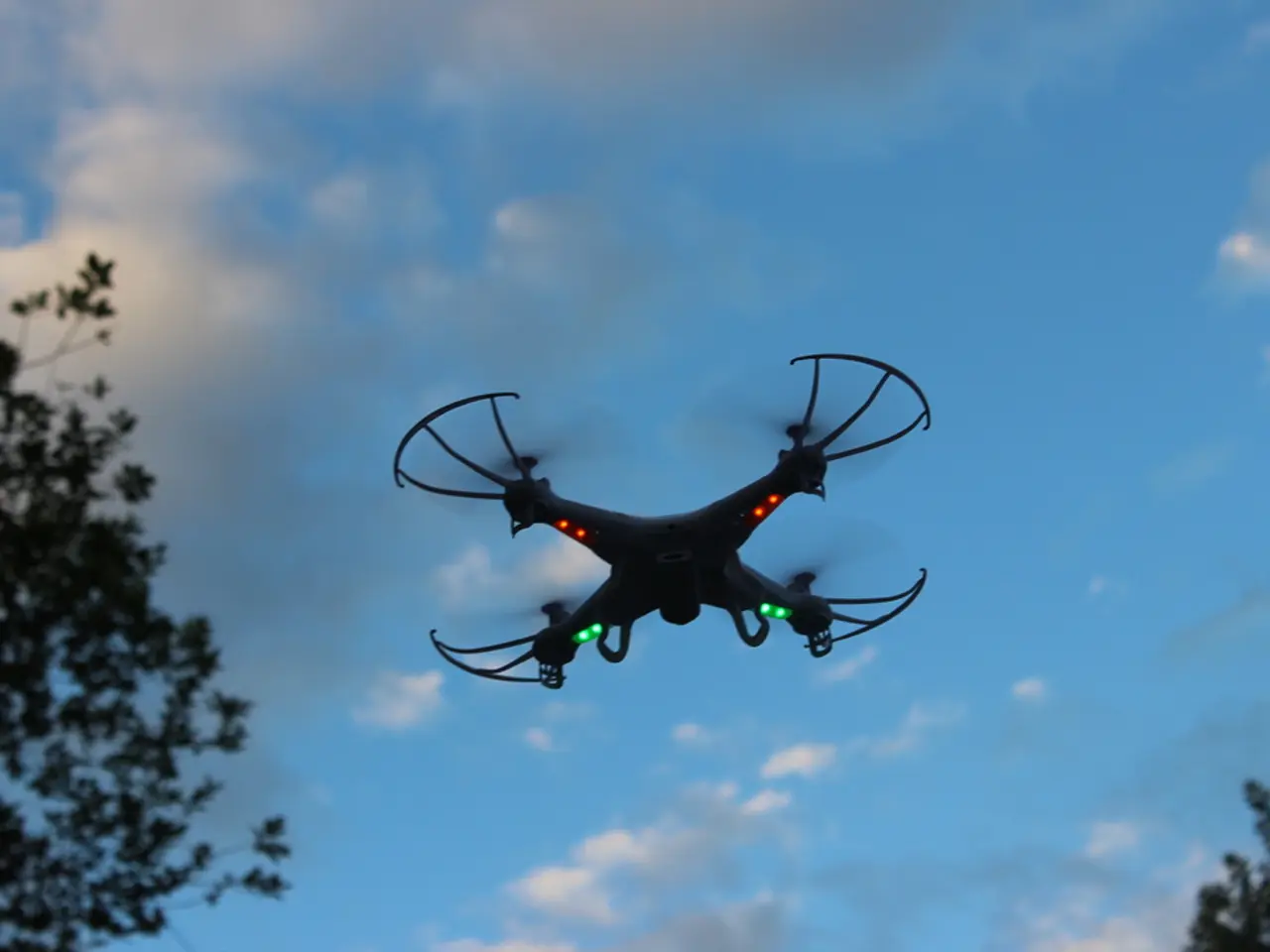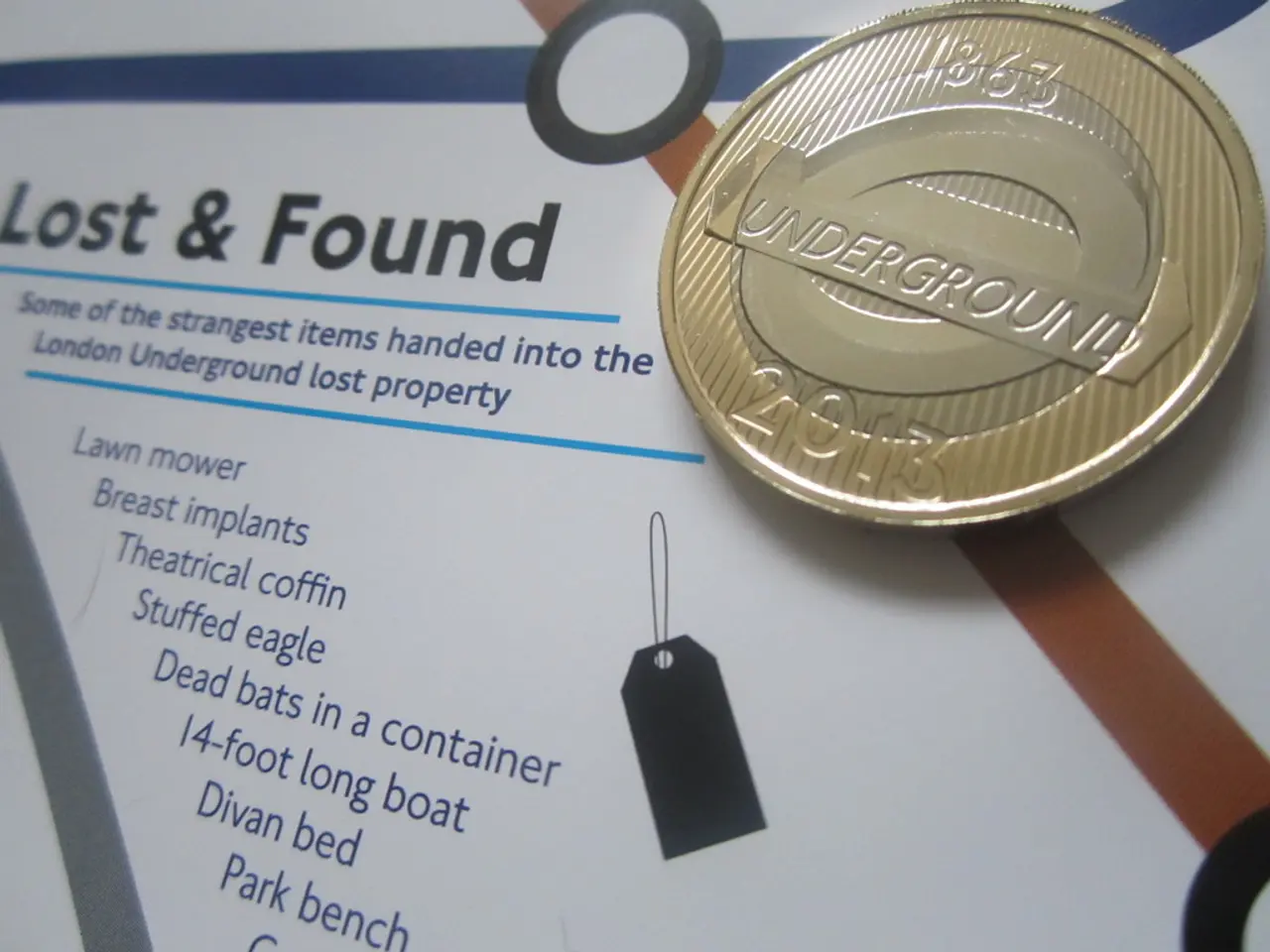Strategies for Identifying Drones at Night: 6 Simple Methods You'll Admire
In the growing world of drone technology, identifying these unmanned aerial vehicles (UAVs) at night can be a challenge. However, with the right combination of visual, auditory, and technological methods, it's possible to spot drones effectively even in low-light conditions.
Visual Methods
Using cameras designed for low-light or night vision conditions is key. Cameras employing infrared (IR) illumination or enhanced brightness and noise reduction algorithms are particularly useful. Advanced object detection models, such as ELS-YOLO, preprocess images to handle noise and low brightness, improving accuracy in detecting drones in darkness.
Thermal or infrared cameras can also detect heat signatures of drones, especially when visible light is insufficient. Laser-based cooperative sensing, which projects identifiable patterns to detect drones relative to their environment, is another effective visual method.
Auditory Methods
Listening for the distinct sound signatures of drones is another approach. Drones typically make audible noises from their rotors or engines, which can be heard over some distance at night when ambient noise is lower. Specialized acoustic detection systems can be employed to recognize drone sounds and differentiate them from other ambient noises.
Technological Methods
Deploying multifunction sensor systems, such as those using radar and wireless signal analysis, is crucial. Systems like Tiami Networks' PolyEdge sensor leverage 5G, 4G, or Wi-Fi signals to detect drones by analysing signal echoes, making them resistant to typical radar jamming and effective day or night regardless of weather.
Radar and RF scanners designed to detect drone communication frequencies and track their movements can often be integrated with wider security systems for rapid identification and response. Some advanced detection systems incorporate AI models for real-time object detection, fused with multiple sensor inputs to improve detection reliability at night.
Setting Up a Digital Fence
To secure your home, consider setting up a digital fence. This involves placing cameras with motion sensors aimed upwards, plus an easy-to-use RF scanner, in multiple spots covering every angle possible. This system can link to a central alert app right on your smartphone or computer.
Staying Legal
It's essential to check local privacy regulations before installing any drone detection technology at your place, as some methods may have specific legal restrictions in your community. On April 6, 2021, the FAA updated its drone rules, letting people fly drones at night without special permits, as long as each drone carries clear anti-collision lighting.
Future of Drone Detection
By 2025, thermal imaging devices, once priced for military or big corporate use only, will become cheaper and more accessible to regular homeowners. New frequency-switching technology will also make it tougher for drones to disguise their wireless signals from trackers.
Portable radar systems are now available for homeowners, connecting wirelessly to their home network and delivering instant alerts direct to their smartphones. These systems can track many drones simultaneously, offering a comprehensive, real-time view beyond what night vision goggles can deliver.
In conclusion, combining visual, auditory, and technological methods provides the best overall capability to identify and spot drones at night with high accuracy and reliability. With the right tools and knowledge, night-time drone spotting can be an achievable task for individuals and security professionals alike.
Here are two sentences containing the word 'technology' that follow from the given text:
- Deploying multifunction sensor systems, such as those using radar and wireless signal analysis, is crucial for effective drone detection – this shows the importance of advanced technology in the field of drone detection.
- By 2025, thermal imaging devices, once exclusive to military or big corporate use, will become more accessible to regular homeowners – this indicates the rapid advancement and democratization of drone detection technology in the near future.




